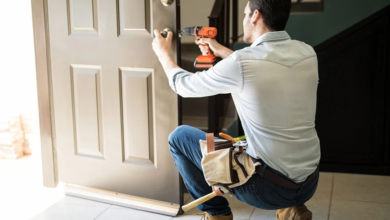Furniture Relocation: Minimize Damage
Minimizing Damage: Best Practices for Handling and Moving Furniture During Relocation

Relocating to a new home is an exciting endeavor, but the process of moving furniture can be daunting and fraught with potential for damage. Whether you’re moving across town or across the country, safeguarding your furniture during transit is essential to preserving its condition and value.
888 Removalists Sydney offer invaluable assistance for relocation and moving within the country. Their expertise in packing, transporting, and unpacking ensures a smooth transition to your new home or office. With their professional services, you can trust that your belongings will be handled with care and arrive safely at their destination, easing the stress of the moving process.
In this comprehensive guide, we’ll explore the best practices for handling and moving furniture to minimize the risk of damage and ensure a smooth transition to your new abode.
Planning and Organization
Before diving into the moving process, take the time to plan and organize effectively. Start by conducting a thorough inventory of your furniture pieces and assessing their condition. Identify any fragile or delicate items that may require special attention during packing and transit. Create a detailed moving plan, including timelines, tasks, and necessary supplies, to streamline the process and minimize last-minute stress.
Gathering High-Quality Packing Materials
Investing in high-quality packing materials is crucial for protecting your furniture during the moving process. Stock up on sturdy moving boxes in various sizes, packing tape, bubble wrap, furniture blankets, and protective padding. Ensure that fragile items are packed in appropriate cushioning materials to prevent scratches, dents, and breakage during transit.
Disassembly of Furniture
For larger furniture pieces such as beds, tables, and bookcases, consider disassembling them before moving. Disassembly not only makes furniture easier to transport but also reduces the risk of damage during transit. Keep track of all hardware and components, and pack them securely in labeled bags or containers to facilitate reassembly at your new home.
Protecting Furniture with Proper Wrapping
Before loading furniture into the moving truck, take the time to wrap each piece securely to prevent damage. Use furniture blankets or moving pads to cover large items and provide an extra layer of protection against scratches and dents. For delicate surfaces, such as wood or glass, apply additional layers of bubble wrap or foam padding to minimize the risk of impact damage.
Proper Lifting Techniques
Proper lifting techniques are essential for preventing injuries and minimizing damage to furniture during the moving process. Lift heavy items with your legs, not your back, and enlist the help of friends or professional movers for assistance with bulky or awkwardly shaped pieces. Avoid dragging furniture across floors, as this can cause scratches and damage to both the furniture and the flooring.
888 Removalist provides top-notch Interstate Removalists Sydney service. With their expertise and dedication, they ensure a seamless relocation experience across state lines. From packing and loading to transportation and unloading, their professional team handles every aspect of the move with care and efficiency, guaranteeing a stress-free transition for clients.
Securing Furniture Inside the Moving Truck
When loading furniture into the moving truck, prioritize stability and security to prevent shifting and damage during transit. Place heavier items at the bottom and distribute weight evenly to maintain balance. Use straps or ropes to secure furniture in place and prevent it from sliding or tipping over during transportation. Fill any empty spaces with padding or cushions to minimize movement and protect fragile items from impact.
Handle With Care During Unloading
Upon arrival at your new home, handle furniture with care during the unloading process to avoid accidents and damage. Use proper lifting techniques and teamwork to safely maneuver items into your new living space. Place furniture in designated areas according to your floor plan, taking care to avoid scraping walls or floors in the process.
Inspection for Damage Upon Arrival
After unloading furniture at your new home, take the time to inspect each piece for any signs of damage or wear. Check for scratches, dents, or other issues that may have occurred during transit. Document any damage thoroughly and notify your moving company or insurance provider as soon as possible to initiate a claim if necessary.
Arranging for Professional Assistance
If you’re concerned about the safety of your furniture or lack the time and resources to handle the moving process yourself, consider enlisting the services of professional movers. Experienced moving companies have the expertise, equipment, and resources to handle furniture with care and ensure a smooth relocation experience from start to finish.
Considering Furniture Insurance
To provide an extra layer of protection for your valuable furniture items, consider purchasing furniture insurance or additional coverage through your moving company. Furniture insurance can offer peace of mind knowing that your belongings are safeguarded against unexpected damage, loss, or theft during the moving process.
Protecting Furniture During Relocation
During the chaos of a move, furniture is particularly susceptible to damage. However, with the right precautions and strategies, you can significantly minimize the risk of harm to your beloved pieces.
Additional Tips for Furniture Protection:
Labeling and Organizing: Clearly label each box containing furniture parts or accessories to ensure easy identification during unpacking. Organize items based on their destination rooms to streamline the unloading process and reduce handling.
Wrapping Fragile Items: Fragile furniture components, such as glass tabletops or delicate decorative pieces, require extra care. Wrap these items individually with bubble wrap or foam padding and secure them with packing tape to provide optimal protection against impact.
Securing Drawers and Doors: To prevent drawers and cabinet doors from opening during transit, use stretch wrap or plastic wrap to secure them in place. This simple step can safeguard against damage caused by shifting contents or sudden movements.
Protective Corners and Edges: Furniture corners and edges are prone to scratches and dents during handling and transportation. Invest in corner protectors or foam padding to cushion vulnerable areas and minimize the risk of damage.
Temperature and Climate Control: Extreme temperatures and humidity levels can adversely affect certain types of furniture, such as wood or upholstered pieces. Take precautions to protect furniture from exposure to adverse weather conditions during transit and storage.
Professional Packing Services: If you’re unsure about properly packing and protecting your furniture, consider hiring professional packing services. Experienced movers have the expertise and equipment to handle furniture with care and ensure optimal protection during transit.
Insurance Coverage: Despite your best efforts, accidents can still occur during the moving process. Consider purchasing additional insurance coverage to protect your furniture against damage, loss, or theft. Review your insurance policy carefully to understand coverage limits and exclusions.
Conclusion
In conclusion, minimizing damage to furniture during relocation requires careful planning, organization, and attention to detail. By following the best practices outlined in this guide, you can safeguard your furniture and ensure a seamless transition to your new home. Whether you’re moving locally or long-distance, prioritizing the safety and protection of your furniture will help preserve its condition and value for years to come.


